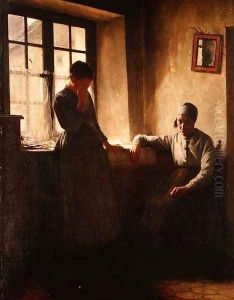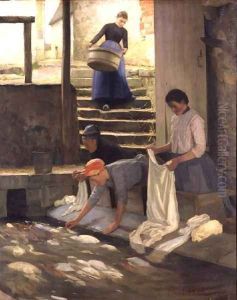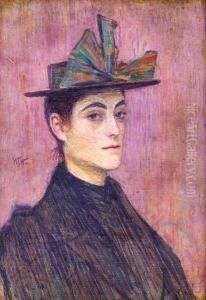William Tom Warrener Paintings
William Tom Warrener, born in 1861 in Lincoln, England, was an artist whose life and career spanned the late 19th and early 20th centuries. He is less well-known than some of his contemporaries, but his work and associations with other artists of the time provide an interesting insight into the period's art scene.
Warrener's early life is not well-documented, but it is known that he developed an interest in art at a young age. He moved to Paris to pursue his artistic education, which was a common move for many aspiring artists of that era who were drawn to the city's vibrant art scene. In Paris, Warrener became associated with the avant-garde artists and was influenced by the Impressionist movement, which was then burgeoning. This influence is evident in his use of light and color and in his focus on capturing the momentary effects of light on the subjects of his paintings.
He became friends with the famous French artist Edgar Degas, a relationship that had a significant impact on his career. Warrener is perhaps best remembered for his connection to Degas rather than for his own body of work. It is believed that he met Degas in the late 1880s, and Degas painted a portrait of Warrener titled 'Portrait of M. W. W.,' which stands as a testament to their friendship.
Warrener's own work included landscapes, genre scenes, and figures. He exhibited his work in various venues, including the Paris Salon, which was the official art exhibition of the Académie des Beaux-Arts in Paris. Although he never became as prominent as some of his contemporaries, Warrener contributed to the art world through his teaching and continued to paint throughout his life.
William Tom Warrener's later life is also shrouded in some obscurity, and he did not achieve widespread fame during his lifetime. He died in 1934, leaving behind a modest but interesting collection of works that reflect the artistic transitions of his time. Warrener's legacy, while not extensive, is preserved in the collections of those who appreciate the nuances of the Impressionist movement and the interconnectedness of artists during that revolutionary period in art history.



